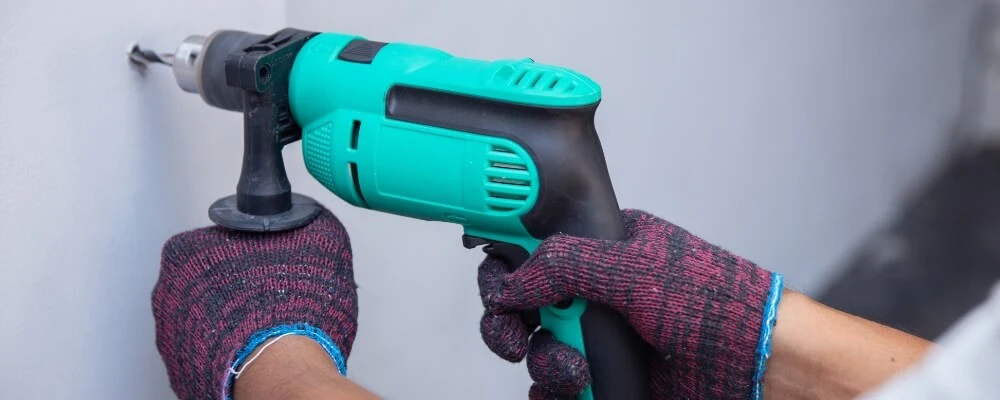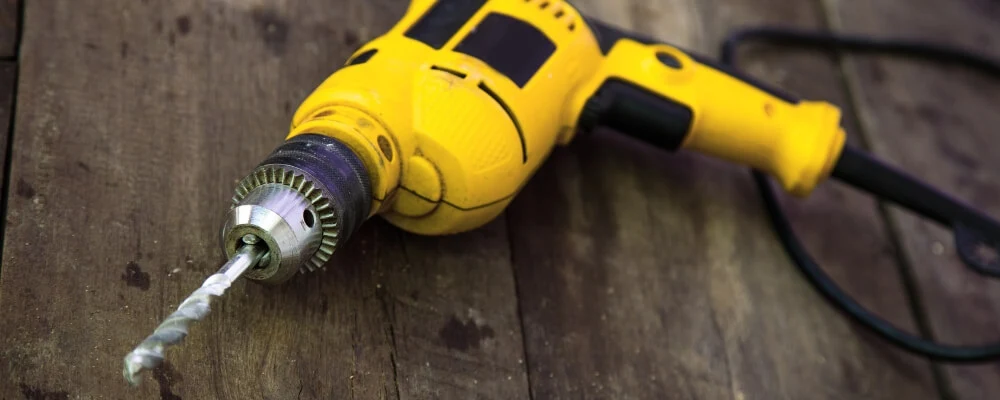Electric drills are indispensable tools in the construction and home improvement world, renowned for their versatility and utility in various tasks, ranging from simple hole drilling to intricate screw driving. Whether you are a professional contractor, a DIY enthusiast, or a homeowner looking to hang a picture frame, understanding the different parts of an electric drill and the safety precautions associated with its use is paramount.
In this blog, we will delve into the intricate components that make up an electric drill, each serving a unique purpose in ensuring the tool’s optimal functionality. We will explore the role of the motor, the significance of the chuck, the variety of drill bits, and much more, providing a comprehensive overview of the drill’s anatomy.
Moreover, we will discuss essential safety precautions, such as the importance of wearing protective gear and securing loose clothing and hair, to ensure a safe drilling experience. These precautions are crucial in mitigating risks and preventing potential accidents and injuries that can occur during the operation of this powerful tool.
Different Parts Of An Electric Drill
An electric drill is a versatile tool used for drilling holes and driving screws. Here are the main parts of an electric drill:
- Motor: The heart of the drill it converts electrical energy to mechanical energy to turn the drill bit.
- Chuck: This is the clamp at the front of the drill that holds the drill bit in place.
- Drill Bit: The cutting tool that is attached to the drill and used to make holes in various materials.
- Trigger: The button you press to operate the drill. It usually also controls the speed of the drill.
- Handle: Where you hold the drill. It often contains the battery on cordless models.
- Reverse Switch: This allows you to change the rotation direction of the drill bit, which is useful for removing screws.
- Speed Control: Some drills have a switch or dial that lets you adjust the speed of the drill.
- Battery Pack: Provides power to cordless drills.
- Power Cord: Provides power to corded drills.
- Gear Box: Contains the gears that allow the drill to operate at different speeds.
- Depth Rod: A guide that can be adjusted to control the depth of the hole being drilled.
- Side Handle: Provides additional grip and control, especially useful for heavy-duty drilling.

Safety Precautions To Follow When Using Electric Drill
When using an electric drill, it is crucial to follow safety precautions to avoid accidents and injuries. Here are some safety precautions to consider:
1. Wear Protective Gear
When operating an electric drill, it is crucial to wear safety glasses to shield your eyes from any flying debris, such as wood or metal shavings, that may be produced while drilling. This helps in preventing any potential damage to the eyes.
Additionally, wearing ear protection is essential, especially when working in environments with high noise levels or when using the drill for extended periods, to prevent any damage to the hearing. Protective gear acts as the first line of defense against any unforeseen accidents and ensures a safer working environment.
2. Secure Loose Clothing and Hair
Before using an electric drill, ensure that all loose clothing is securely fastened and long hair is tied back. Loose clothing and hair can easily get entangled in the rotating parts of the drill, leading to severe injuries.
By securing any loose items, you reduce the risk of getting caught in the drill and ensure a smoother and safer operation.
3. Use the Right Drill Bit
Choosing the appropriate drill bit for the material you are working on is vital. Different materials require different types of drill bits; for example, wood requires wood bits, metal requires metal bits, and masonry requires masonry bits.
Using the wrong bit can not only damage the material but also pose a risk of breaking the bit and causing injury. Therefore, selecting the right drill bit is crucial for effective and safe drilling.
4. Check the Equipment
Before starting the drilling process, it is essential to inspect the drill to ensure that it is in proper working condition and all its parts are secure. Check the cord for any damage, ensure the chuck is tight, and verify that the drill bits are sharp and free from rust or damage.
A well-maintained drill is less likely to malfunction, reducing the risk of accidents and ensuring a more efficient operation.
5. Hold the Drill Securely
Holding the drill securely with both hands is crucial to maintain control of the tool. Avoid using excessive force as it can lead to loss of control and potential injury. A firm grip allows for precise drilling and helps prevent any slippage that might occur due to the drill’s torque or the material’s resistance, ensuring a safer and more accurate drilling experience.
6. Work in a Well-Lit Area
Working in a well-lit area is essential for visibility and precision. A well-illuminated workspace allows you to see the workpiece clearly, mark drilling points accurately, and monitor the drilling process effectively. It also helps in identifying any potential hazards in the workspace, such as obstacles or clutter, reducing the risk of accidents.

7. Unplug or Remove Battery When Not in Use
To avoid any accidental activation of the drill, always unplug corded drills or remove the battery pack from cordless drills when they are not in use or when changing drill bits. This practice ensures that the drill does not start unexpectedly, which can lead to injuries, especially when handling the drill bit.
8. Avoid Drilling Near Electrical and Plumbing Lines
When drilling into walls, floors, or ceilings, exercise caution to avoid hitting electrical wires or plumbing. Striking such utilities can lead to serious consequences, including electric shocks or water damage. Use a stud finder to locate wires and pipes before drilling, and always refer to building plans or consult a professional if unsure.
9. Keep Bystanders at a Safe Distance
Ensuring that other people, especially children, are at a safe distance from your work area is crucial to avoid any injuries to bystanders.
Flying debris or a loss of control of the drill can pose a risk to anyone in the vicinity. By maintaining a clear and secure workspace, you can prevent accidents and ensure the safety of those around you.
10. Use Clamps to Secure Workpieces
Securely clamping the material you are drilling is essential to prevent it from moving during the drilling process. A moving workpiece can lead to inaccurate drilling and can also cause the drill to slip, posing a risk of injury. Using clamps to hold the workpiece firmly in place ensures precision and safety.
11. Read the Manual
Always read the user manual that comes with the drill to understand its operation, features, and safety precautions thoroughly. The manual provides specific information about the drill model, including its capabilities and limitations, and offers guidance on how to use the tool safely and effectively.
Being well-informed about the tool’s operation is key to avoiding mishaps and ensuring a safe and successful drilling experience.
Conclusion
Understanding the intricate components and safety precautions of an electric drill is crucial for anyone looking to harness its versatility in construction and home improvement tasks. Each part, from the motor to the drill bit, plays a pivotal role in ensuring optimal functionality and precision while adhering to safety measures like wearing protective gear and securing loose items, mitigating risks, and preventing potential accidents.
Whether you’re a professional, a DIY enthusiast, or a homeowner, having a comprehensive knowledge of the electric drill’s anatomy and safety protocols is indispensable. This knowledge empowers users to operate the tool with confidence and caution, fostering a safer and more informed working environment ensuring every drilling task is conducted safely and efficiently.

